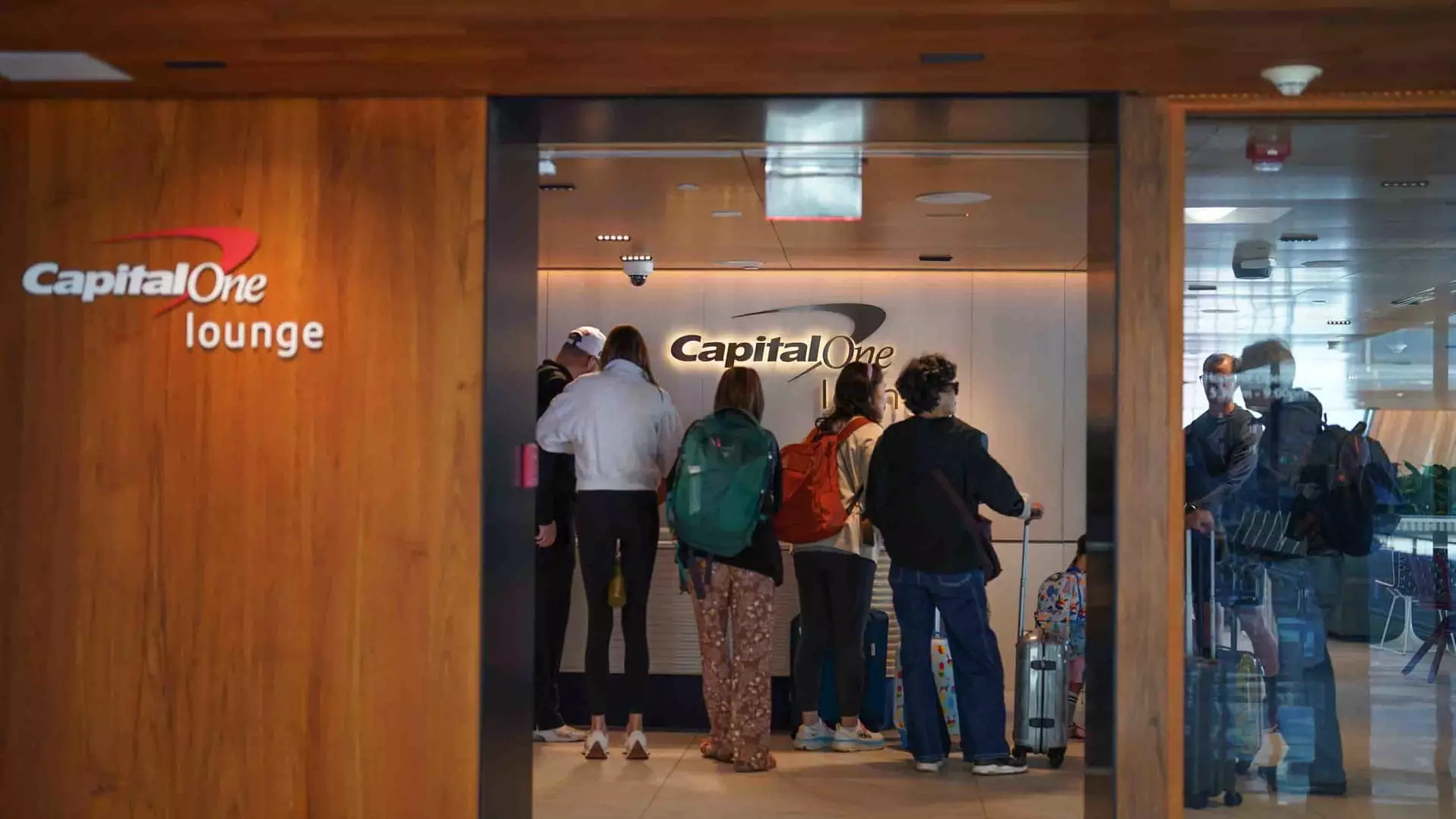Air travel has often been characterized by its balancing act between convenience and cost. As airplane ticket prices dip, the costs associated with airport amenities, particularly lounges, are skyrocketing, revealing a bitter irony in the landscape of modern air travel. The recent announcement from Capital One regarding new restrictions and fees associated with lounge access serves as a prime example of the industry’s broader shift and raises critical questions about exclusivity, accessibility, and customer loyalty.
The Restrictive Turn: Economic Exclusion for Travelers
Starting February 1, Capital One plans to impose fees on several aspects of lounge access, a maneuver that fits into a troubling trend. Previously, cardholders of the Venture X and Venture X Business cards enjoyed the privilege of bringing guests into these exclusive spaces. Now, they will face a fee of $125 annually for each cardholder access and additional charges per guest. This move exemplifies a growing disconnect with the principles of accessibility that premium customers should expect. It’s a clear attempt to manage overcrowding, but at what cost? The democratization of air travel has always hinged on a balance between affordability and indulgence; pivoting so aggressively toward monetization diminishes that spirit.
The Economy of Exclusivity: A Changing Landscape
The trend of tightening lounge access isn’t unique to Capital One; it mirrors changes made by competing companies, including American Express and JPMorgan Chase. What we are witnessing is a transformation where premium travel perks become privileges that are more elusive for the average traveler. The requirement for primary cardholders to spend $75,000 annually just to enjoy basic lounge access is steep, effectively filtering out the casual traveler in favor of high-spending customers. In a time when so many consumers are already feeling the pressure of rising living costs, this move feels especially tone-deaf.
Popularity Unintended Consequences: A Victim of Success
As lounges have surged in popularity, they have become victims of their own success. Both Capital One and other credit card companies now find themselves in a predicament where amenities designed to enhance the travel experience are being overwhelmed by demand. Henry Harteveldt, a noted travel industry analyst, rightly points out that no lounge operator wants the environment to feel as chaotic as public airport terminals. Yet, by implementing such drastic measures, the true essence of the lounge experience—comfort, relaxation, and exclusivity—risks being overshadowed by a transactional nature that prioritizes profit over genuine customer satisfaction.
Industry Response: How Airlines Are Reacting
Airlines are not sitting idle as lounge access becomes a contentious issue. Delta, for instance, has recently revamped its lounge access policies, opting for annual caps on visits instead of unlimited access—a move that equally frustrates travelers. The shift towards premium, more exclusive cabins, such as Delta’s new Delta One lounges, further underlines a growing trend for airlines to cater specifically to higher-tier segments while sidelining average customers. The premium travel market appears to be thriving, even as the average traveler feels increasingly sidelined.
The Future of Hanging Out in Lounges: What Lies Ahead?
As each credit card company and airline adapts to overcrowding with fees, the question arises: What’s next? While lounge experiences were once characterized by decadence and a sense of escape, the introduction of fees might transform them into exclusive realms only accessible to the highest spenders… leading to a disproportionate representation of affluent travelers. The risk, however, is that this shift could alienate a loyal customer base. Many travelers choose to invest in premium travel cards for the benefits they provide, and if those benefits continue to dwindle in accessibility, customer frustration will likely peak, undermining brand loyalty.
In this competitive landscape, it is crucial for companies to reassess their approach to customer experiences. As lounges evolve and adapt to increased demand, maintaining an experience that addresses the needs of all travelers—while still ensuring a level of exclusivity—is integral. The trick will be to balance profit motives with the generous, welcoming spirit that originally defined these havens in the hectic world of air travel.

